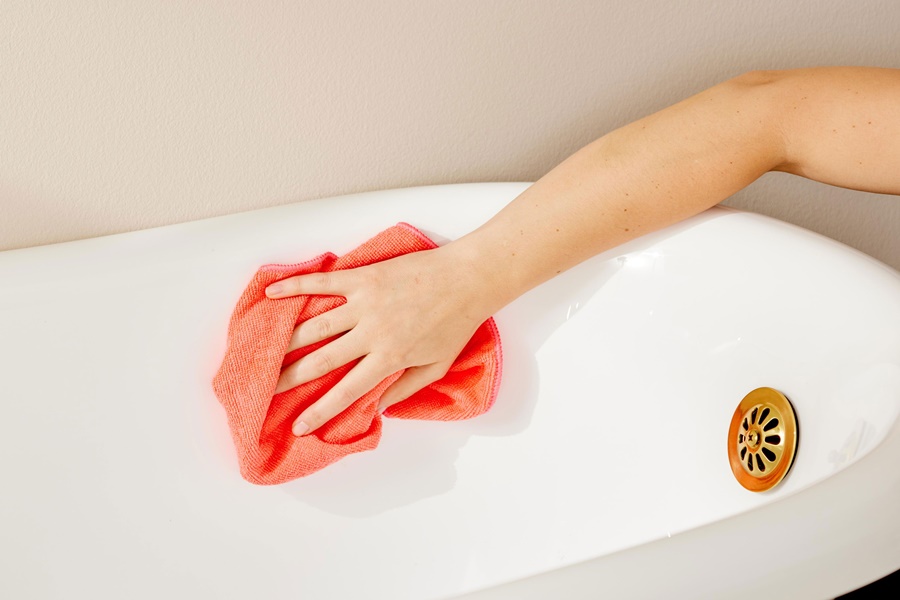Soap scum build-up in your bathtub is not only unsightly, but it also harbors bacteria and creates an unhygienic bathing environment. Whether your tub is porcelain, acrylic, or fiberglass, removing soap scum efficiently and safely requires the right methods, products, and techniques. In this comprehensive guide, we explain the best ways to remove soap scum from your bathtub, restoring its shine and cleanliness.
What Is Soap Scum and Why Is It So Difficult to Remove?
Soap scum is a filmy white or gray layer that forms when soap combines with hard water minerals like calcium and magnesium. Over time, it adheres to surfaces and hardens, making it difficult to clean with just water and a sponge.
Essential Tools and Materials to Get Started
To effectively remove soap scum, gather the following materials:
White vinegar
Baking soda
Spray bottle
Microfiber cloths
Scrub brush or sponge with abrasive side
Rubber gloves
Squeegee
Dishwashing liquid
Commercial soap scum remover (optional)
Method 1: Using Vinegar and Baking Soda – A Natural Cleaning Powerhouse
Step-by-Step Process:
1. Spray the Tub with Vinegar:
Fill a spray bottle with undiluted white vinegar. Spray it generously over the soap scum-covered areas and let it sit for 15 to 20 minutes to break down mineral deposits.
2. Apply Baking Soda:
Sprinkle baking soda directly onto the surfaces. When combined with vinegar, it creates a fizzing reaction that lifts grime and scum effectively.
3. Scrub Gently:
Using a soft-bristled scrub brush or non-scratch sponge, scrub the tub in circular motions. Focus on corners, edges, and any textured surfaces.
4. Rinse Thoroughly:
Rinse the area with warm water. Repeat the process if soap scum remains.
5. Dry with a Microfiber Cloth:
Wipe the tub dry to prevent new build-up.
Method 2: Dish Soap and Vinegar – Tough on Scum, Gentle on Surfaces
This solution works exceptionally well on fiberglass bathtubs.
Instructions:
1. Mix Solution:
Combine equal parts white vinegar and dishwashing liquid (preferably Dawn) in a spray bottle. Shake well to mix.
2. Apply and Let Sit:
Spray onto affected areas and let sit for 30 minutes.
3. Scrub and Rinse:
Use a sponge to scrub. Rinse with warm water and dry with a clean towel.
This method cuts through oily residues and mineral layers effectively, making it ideal for routine cleaning.
Method 3: Commercial Cleaners – When Natural Isn’t Enough
Sometimes, home remedies may not be sufficient for years of built-up scum. In such cases, commercial products like CLR, Scrubbing Bubbles, or Lysol Bathroom Cleaner can be effective.
How to Use Safely:
Always wear gloves and ventilate the area.
Follow label instructions carefully.
Do not mix chemical cleaners with vinegar or bleach.
Test on a small spot to avoid damaging delicate finishes.
Special Considerations for Different Bathtub Materials
Porcelain Tubs:
Safe to use vinegar and baking soda.
Avoid metal brushes or abrasive powders that could scratch the surface.
Acrylic Tubs:
Use non-abrasive cloths and sponges.
Avoid acidic cleaners that may dull the finish.
Fiberglass Tubs:
Suitable for mild solutions like dish soap and vinegar.
Avoid any product labeled "abrasive" or containing bleach.
Preventing Soap Scum Build-Up in the Future
The best way to handle soap scum is to prevent it from accumulating. Here are some key preventive tips:
Use a Daily Shower Spray:
Spray a mixture of vinegar and water after each use to prevent build-up.
Squeegee or Wipe Down the Tub:
Use a squeegee or microfiber cloth to remove water after each bath or shower.
Switch to Liquid Soap:
Bar soaps often contain fatty acids that contribute to soap scum. Liquid body washes reduce residue.
Install a Water Softener:
Hard water is a major contributor to soap scum. A softener can drastically reduce build-up.
Dealing with Stubborn Soap Scum: Advanced Techniques
For thick, layered soap scum, more intensive methods may be required.
Use a Plastic Scraper:
A plastic scraper can safely lift hardened layers without damaging the tub surface.
Steam Cleaning:
A handheld steam cleaner loosens dirt and grime, making scrubbing much easier.
Hydrogen Peroxide Paste:
Mix hydrogen peroxide with baking soda into a paste. Apply to the area and let sit for 30 minutes before scrubbing and rinsing.
Common Mistakes to Avoid
Using steel wool or abrasive pads: These can scratch and damage tub surfaces.
Mixing cleaners: Never mix bleach and vinegar or any acidic products with ammonia.
Ignoring ventilation: Proper airflow is necessary to avoid inhaling chemical fumes.
How Often Should You Clean Your Bathtub?
To maintain a clean, scum-free bathtub:
Perform a light cleaning weekly using natural products.
Conduct a deep cleaning monthly to tackle hard-to-see build-up.
Implement preventive measures daily to reduce effort long term.
Eco-Friendly Soap Scum Solutions
Concerned about the environment? Try these:
Castile soap instead of traditional soaps.
Essential oils like tea tree or lemon for scent and antibacterial properties.
Reuse old toothbrushes for detailed scrubbing.
These options reduce your chemical footprint while maintaining a sparkling clean tub.
Conclusion
Keeping your bathtub free of soap scum doesn’t have to be a never-ending battle. With the right cleaning agents, tools, and preventive habits, you can maintain a sparkling clean, hygienic, and welcoming bath space. Whether you prefer natural remedies or commercial products, consistency is key to success. Clean smart, clean often, and enjoy a scum-free soaking experience every time.

